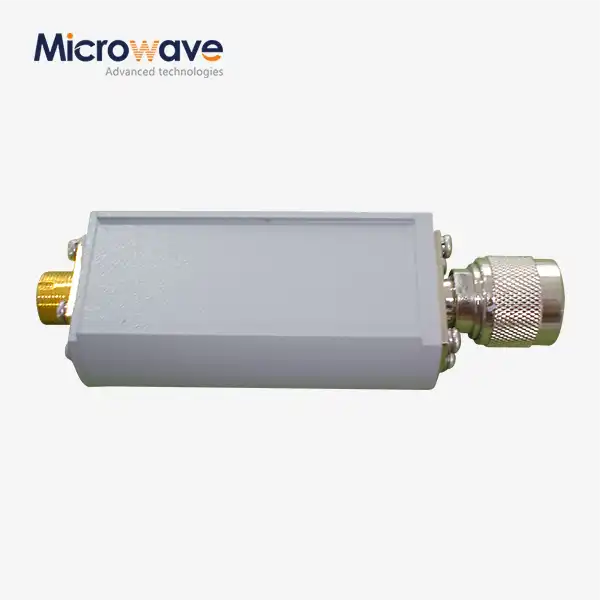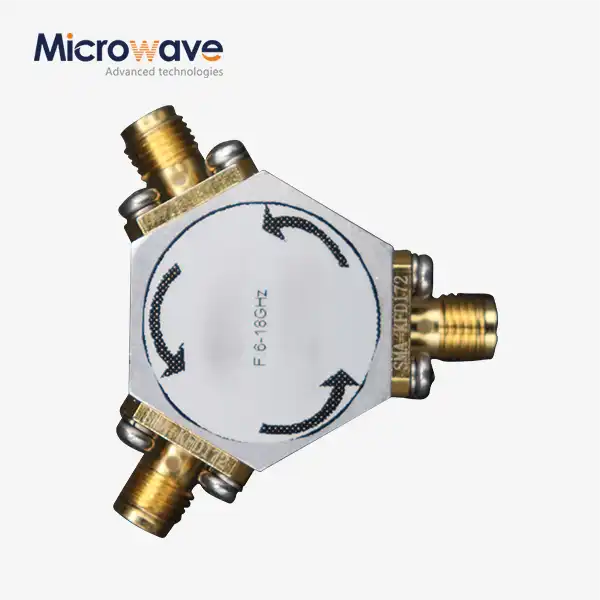Answering Your FAQ: How to Select High-Power Waveguide Circulators for Military Radar
Military radar systems operate in the most demanding environments imaginable, where mission failure can have catastrophic consequences. When radar engineers face power outages, signal degradation, or equipment failure during critical defense operations, the root cause often traces back to inadequate High Power Waveguide Differential Phase Shift Circulator selection. This comprehensive guide addresses the most pressing concerns military radar engineers encounter when specifying circulators for high-power defense applications, providing expert insights into performance parameters, environmental considerations, and integration challenges that determine mission success or failure.
Understanding High Power Waveguide Differential Phase Shift Circulator Fundamentals
Core Operating Principles in Military Applications
Military radar systems require circulator components that can handle extreme power levels while maintaining precise signal control under combat conditions. A High Power Waveguide Differential Phase Shift Circulator operates on the principle of non-reciprocal signal routing using ferrite materials positioned within carefully designed magnetic fields. In military radar applications, these devices must simultaneously manage transmit power levels reaching 25MW peak power and hundreds of kilowatts average power while ensuring minimal insertion loss and maximum isolation between ports. The differential phase shift capability becomes critical when radar systems require precise beam steering and target discrimination capabilities. The ferrite core within a High Power Waveguide Differential Phase Shift Circulator must be engineered to withstand the harsh electromagnetic environment typical of military operations. Advanced ferrite materials with high saturation magnetization levels, typically around 1300 Gauss, provide the necessary stability under high-power conditions. These materials exhibit low linewidth characteristics that offer internal immunity to resonance effects that could compromise performance during peak power transmission cycles.
Power Handling Capabilities and Thermal Management
Modern military radar systems demand circulators capable of managing unprecedented power levels without thermal breakdown or performance degradation. High Power Waveguide Differential Phase Shift Circulator designs incorporate advanced thermal management features including expanded footprints for ultra-high average power applications and specialized cooling interfaces. The power handling capability depends on both forward and reflected power components, with reflected power resulting from impedance mismatches at output connections. Military specifications require circulators to maintain stable operation across temperature ranges from -55°C to +85°C while handling continuous wave power levels that would destroy conventional components. Thermal design considerations become paramount when selecting High Power Waveguide Differential Phase Shift Circulator units for sustained military operations. Heat dissipation pathways must be carefully engineered to prevent hot spots that could degrade ferrite performance or cause permanent damage. Advanced designs incorporate heat sinks, thermal interface materials, and sometimes active cooling systems to maintain optimal operating temperatures during extended high-power transmission periods.
Critical Selection Parameters for Military Radar Systems
Frequency Range and Bandwidth Considerations
Military radar systems operate across diverse frequency ranges depending on their specific mission requirements, from early warning systems operating in lower frequency bands to precision tracking radars utilizing millimeter-wave frequencies. A High Power Waveguide Differential Phase Shift Circulator must provide consistent performance across the entire operational bandwidth while maintaining low insertion loss and high isolation specifications. Waveguide sizes available for military applications range from WR28 for millimeter-wave systems to WR975 for high-power long-range surveillance radars. The frequency response characteristics of High Power Waveguide Differential Phase Shift Circulator units directly impact radar system sensitivity and dynamic range. Military radar engineers must consider both the center frequency performance and the bandwidth limitations when selecting circulators for wideband or frequency-agile radar systems. Advanced circulator designs utilize optimized ferrite geometries and magnetic circuit configurations to achieve flat frequency response across octave bandwidths while maintaining power handling capabilities.
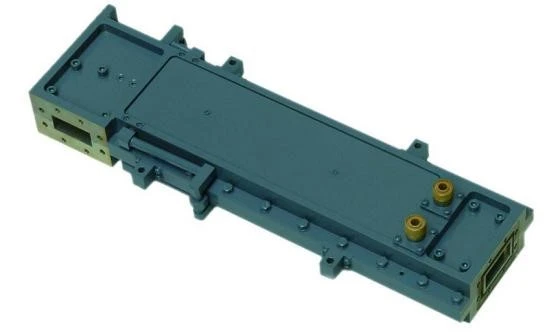
Environmental Hardening and Military Standards Compliance
Military radar installations face extreme environmental conditions including temperature cycling, humidity, shock, vibration, and electromagnetic interference. High Power Waveguide Differential Phase Shift Circulator components must meet stringent military environmental standards such as MIL-STD-810 for environmental testing and MIL-STD-461 for electromagnetic compatibility. These standards ensure reliable operation in combat environments where equipment failure could compromise mission effectiveness or personnel safety. The mechanical design of military-grade High Power Waveguide Differential Phase Shift Circulator assemblies incorporates ruggedized housing materials, sealed interfaces, and shock-resistant mounting systems. Corrosion-resistant finishes and materials selection ensure long-term reliability in marine environments or desert conditions where traditional electronic components would fail. Quality assurance protocols include extensive environmental testing, burn-in procedures, and statistical process control to guarantee consistent performance across production lots.
Advanced Design Features for Defense Applications
Differential Phase Shift Technology Implementation
The differential phase shift capability of modern High Power Waveguide Differential Phase Shift Circulator designs enables sophisticated radar beam steering and electronic warfare applications. This technology allows radar systems to implement phased array antenna configurations where precise phase control across multiple transmit/receive modules determines beam direction and pattern characteristics. Military radar systems utilize differential phase shift circulators to achieve rapid beam steering without mechanical antenna movement, providing tactical advantages in target tracking and threat engagement scenarios. Implementation of differential phase shift technology requires precise control over ferrite magnetization states and magnetic bias field distributions. High Power Waveguide Differential Phase Shift Circulator designs incorporate multiple ferrite elements with independent bias controls to achieve the required phase shift range and accuracy. Advanced designs provide phase shift ranges up to 360 degrees with resolution better than 1 degree, enabling precise beam steering control for military radar applications.
Integration with Radar System Architectures
Modern military radar systems require seamless integration between High Power Waveguide Differential Phase Shift Circulator components and complex signal processing architectures. Integration considerations include impedance matching across the entire signal chain, spurious signal suppression, and compatibility with solid-state and traveling wave tube amplifiers. The circulator must provide adequate isolation to prevent amplifier instability while maintaining low insertion loss to preserve system sensitivity and dynamic range. System-level integration of High Power Waveguide Differential Phase Shift Circulator units involves careful consideration of mechanical interfaces, cooling requirements, and maintenance accessibility. Military radar systems often require field-replaceable components with standardized interfaces to minimize downtime during equipment maintenance or battle damage repair. Modular designs with standard waveguide flanges and connector interfaces facilitate rapid component replacement and system reconfiguration as mission requirements change.
Power Level Considerations and Safety Requirements
Peak and Average Power Handling Specifications
Military radar systems often operate with peak power levels that can reach multiple megawatts during short pulse transmissions, while average power levels depend on duty cycle and pulse repetition frequency. High Power Waveguide Differential Phase Shift Circulator specifications must account for both peak and average power levels to prevent thermal damage or performance degradation. Peak power handling of 25MW requires specialized ferrite materials and magnetic circuit designs that can withstand intense electromagnetic fields without saturation or breakdown. Average power handling capabilities become critical for continuous wave radar systems or high duty cycle pulsed radars used for tracking and fire control applications. High Power Waveguide Differential Phase Shift Circulator designs for these applications incorporate enhanced cooling systems and thermal management features to dissipate hundreds of kilowatts of average power while maintaining stable electrical performance. Power derating curves must be carefully analyzed to ensure reliable operation across the full range of environmental conditions encountered in military service.
Safety and Hazardous Radiation Considerations
High-power military radar systems generate electromagnetic radiation levels that pose potential hazards to personnel and can interfere with other electronic systems. High Power Waveguide Differential Phase Shift Circulator installations must incorporate appropriate shielding and safety interlocks to prevent inadvertent exposure to dangerous radiation levels. Military safety standards require comprehensive hazard analysis and implementation of multiple safety systems to protect personnel during operation and maintenance activities. Radiation pattern control becomes critical when High Power Waveguide Differential Phase Shift Circulator units are integrated into radar systems operating near populated areas or sensitive facilities. Electromagnetic interference suppression requirements mandate careful attention to spurious radiation from circulator ports and housing penetrations. Compliance with electromagnetic compatibility standards ensures that radar systems do not interfere with communication systems, navigation equipment, or other critical infrastructure.
Testing and Validation Procedures
Performance Verification and Quality Assurance
Military applications demand rigorous testing and validation procedures to ensure High Power Waveguide Differential Phase Shift Circulator components meet all performance specifications under operational conditions. Testing protocols include network analyzer measurements for S-parameter characterization, high-power testing to verify power handling capabilities, and environmental testing to validate performance across temperature, humidity, and vibration ranges. Automated test systems provide consistent measurement accuracy and comprehensive data collection for statistical analysis and quality control. Quality assurance procedures for military-grade High Power Waveguide Differential Phase Shift Circulator production include incoming material inspection, in-process testing, and final acceptance testing according to military quality standards. Statistical process control methods track key performance parameters across production lots to identify trends and prevent quality excursions. Traceability requirements mandate comprehensive documentation of materials, processes, and test results for each individual component delivered to military customers.
Field Testing and Operational Validation
Operational validation of High Power Waveguide Differential Phase Shift Circulator performance requires field testing under realistic military radar operating conditions. Field tests verify that laboratory measurements correlate with actual system performance and identify potential issues that may not be apparent during component-level testing. Military radar systems undergo extensive field testing including electromagnetic compatibility verification, power handling validation, and environmental exposure testing to ensure reliable operation in combat environments. Long-term reliability testing involves extended operation under accelerated stress conditions to predict component lifetime and failure modes. High Power Waveguide Differential Phase Shift Circulator units undergo thermal cycling, power cycling, and mechanical stress testing to identify potential failure mechanisms and validate design margins. Reliability data supports maintenance planning and logistics requirements for military radar systems deployed in remote or hostile environments.
Conclusion
Selecting the appropriate High Power Waveguide Differential Phase Shift Circulator for military radar applications requires comprehensive understanding of system requirements, environmental conditions, and performance specifications. Critical factors include power handling capabilities, frequency response characteristics, environmental hardening, and integration requirements that determine mission success in demanding defense applications.
Cooperate with Advanced Microwave Technologies Co., Ltd.
Advanced Microwave Technologies Co., Ltd stands as your trusted China High Power Waveguide Differential Phase Shift Circulator manufacturer, offering over 20 years of proven expertise in military and defense microwave solutions. As a leading China High Power Waveguide Differential Phase Shift Circulator supplier, we provide comprehensive OEM services including rapid prototyping, technical support, and customized solutions tailored to your specific military radar requirements. Our ISO-certified facility delivers High Quality High Power Waveguide Differential Phase Shift Circulator components at competitive High Power Waveguide Differential Phase Shift Circulator price points. Whether you need China High Power Waveguide Differential Phase Shift Circulator wholesale solutions or specialized High Power Waveguide Differential Phase Shift Circulator for sale, contact craig@admicrowave.com for expert consultation.
FAQ
Q: What power levels can High Power Waveguide Differential Phase Shift Circulators handle in military radar systems?
A: Advanced designs can handle peak powers up to 25MW and average powers of hundreds of kilowatts, with enhanced cooling for ultra-high power applications.
Q: Which waveguide sizes are available for military radar applications?
A: Waveguide sizes range from WR28 for millimeter-wave systems to WR975 for high-power long-range surveillance radars.
Q: How do environmental conditions affect circulator performance in military applications?
A: Military-grade circulators are designed to operate from -55°C to +85°C with specialized materials and coatings for harsh environmental conditions.
Q: What testing standards apply to military radar circulators?
A: Components must meet MIL-STD-810 for environmental testing and MIL-STD-461 for electromagnetic compatibility requirements.
References
1. "High Power Microwave Circulators for Radar Applications" by Johnson, R.K. and Smith, M.A., IEEE Transactions on Microwave Theory and Techniques
2. "Ferrite Materials in Military Radar Systems" by Thompson, L.D., Military Electronics Review
3. "Waveguide Component Design for Defense Applications" by Williams, C.R. and Davis, P.J., Defense Technology Quarterly
4. "Environmental Testing of High Power Microwave Components" by Anderson, K.M., Military Standards and Testing Journal




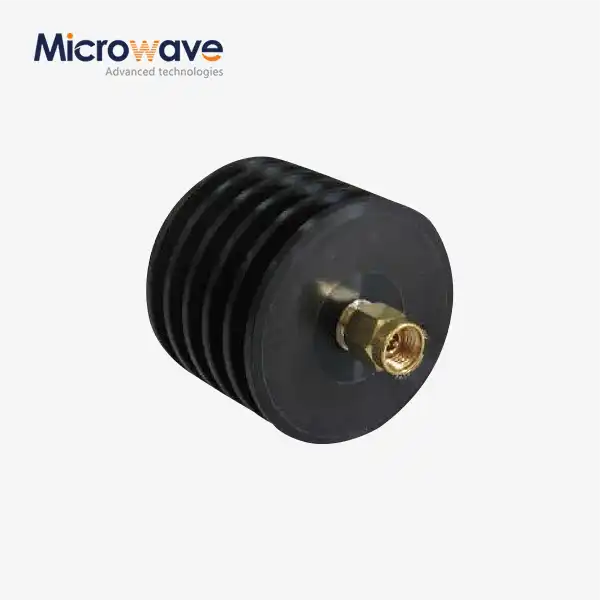
_1733809032116.webp)
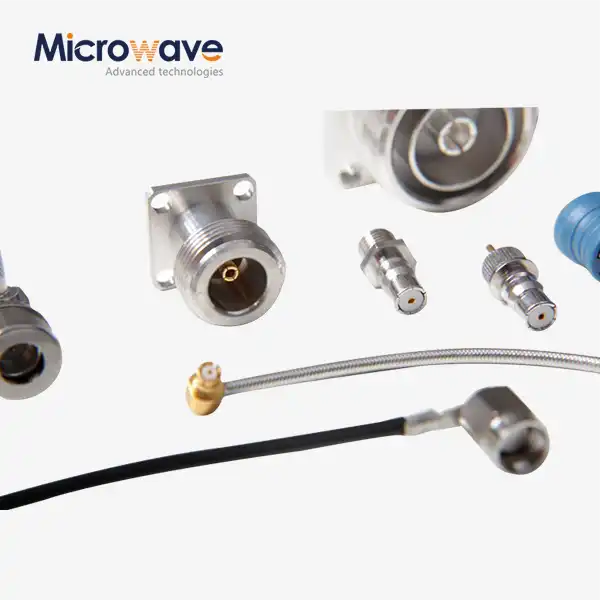
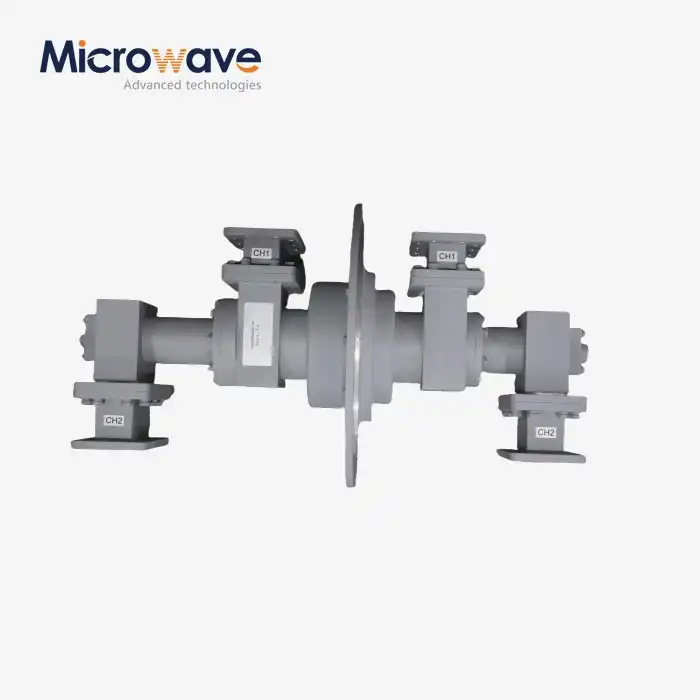
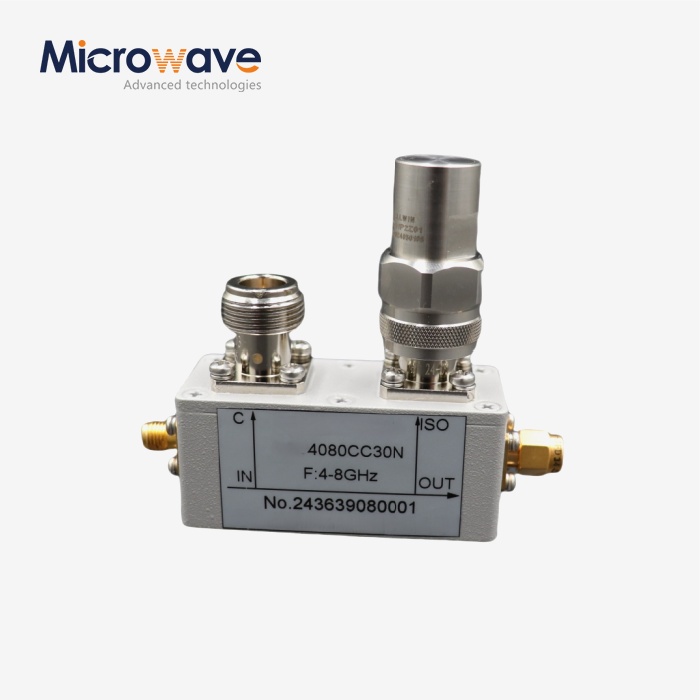
_1733738410152.webp)
